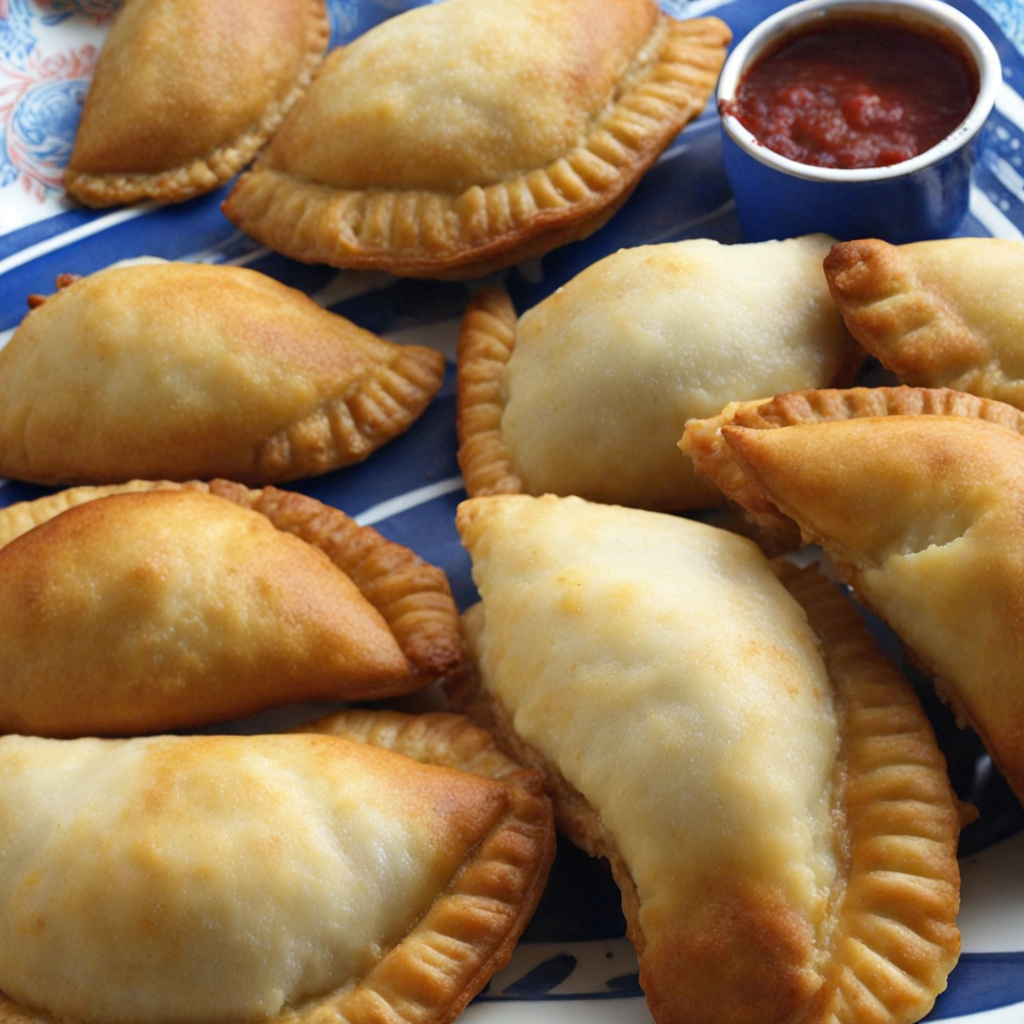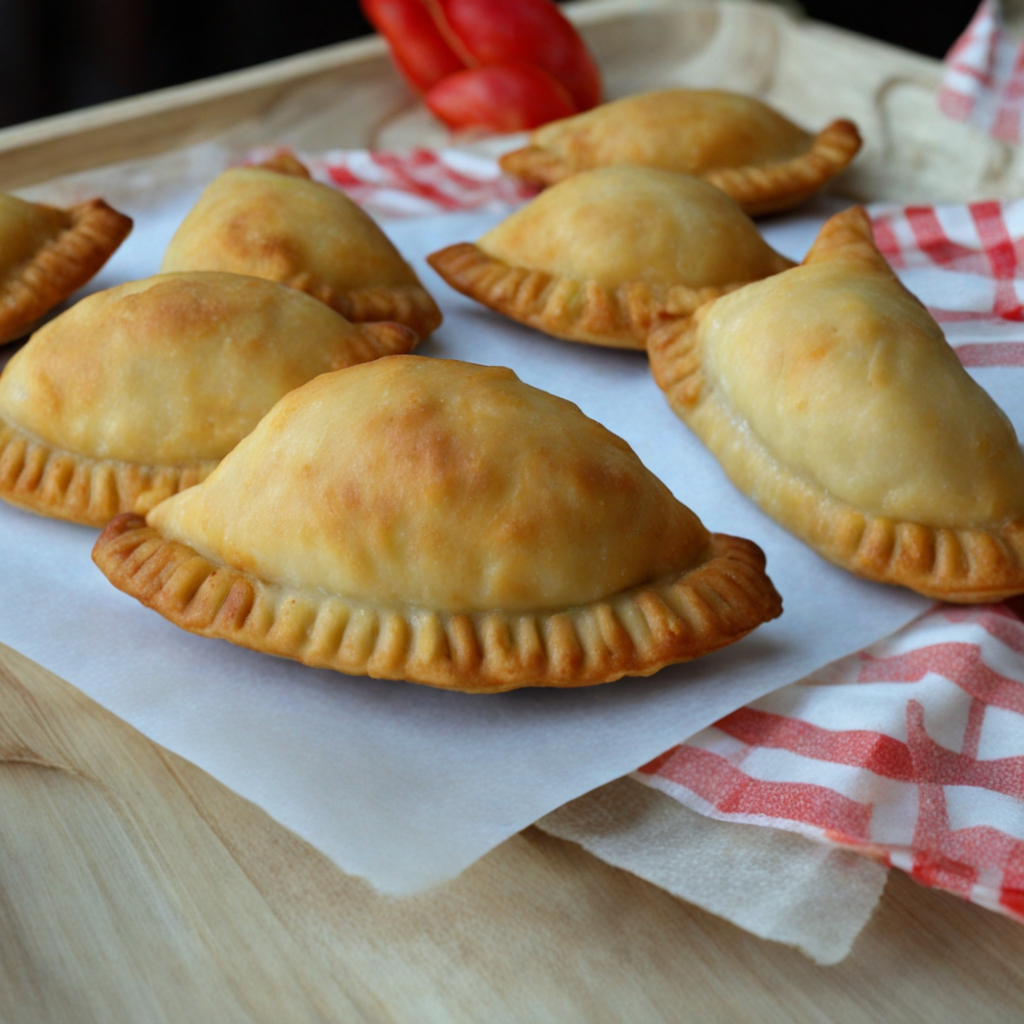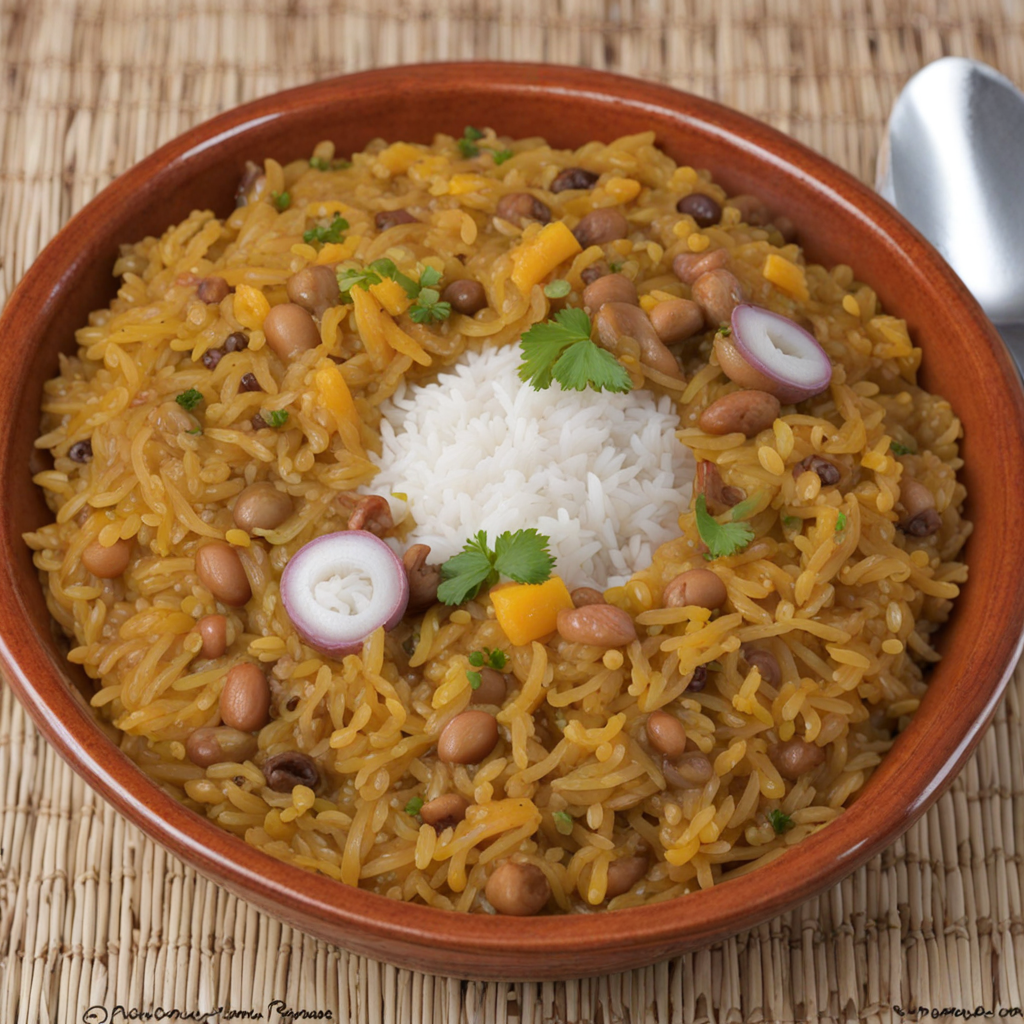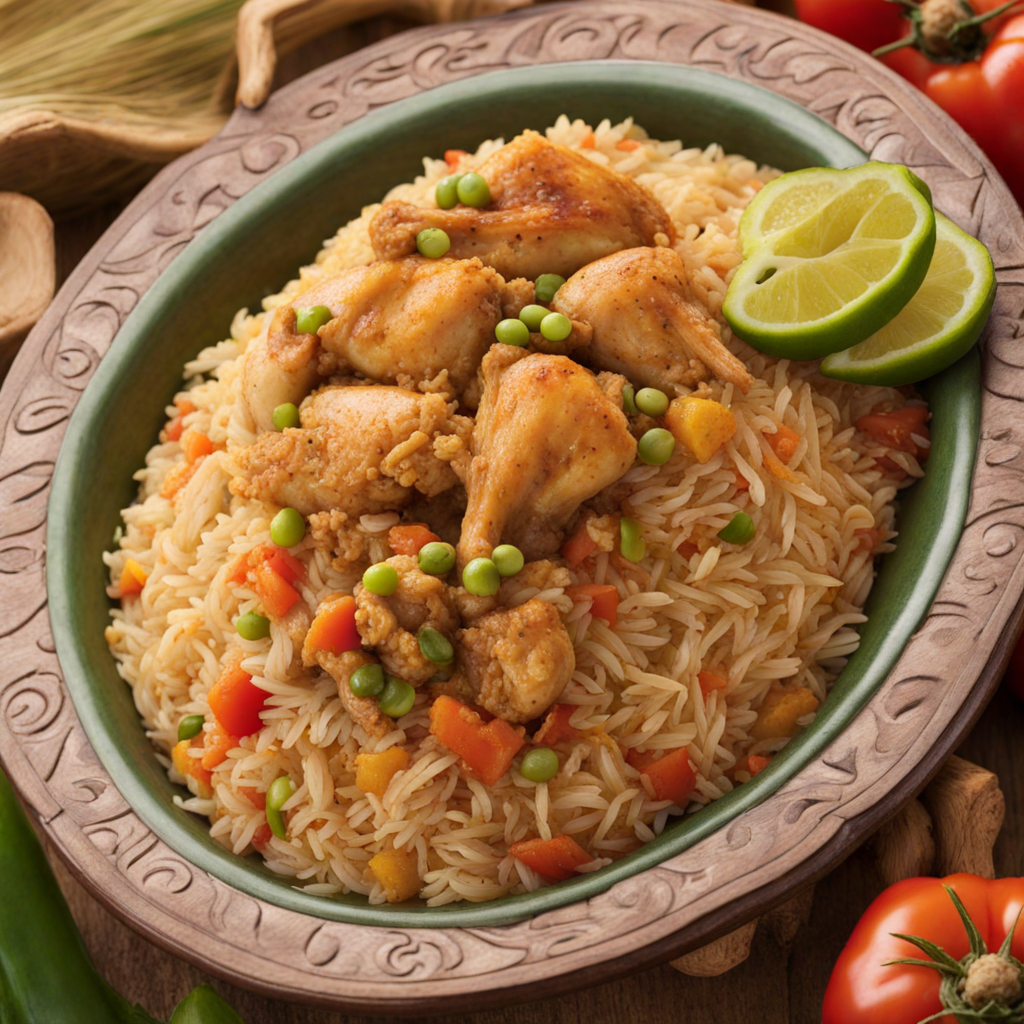Empanadas
Empanadas from Panama are a delightful culinary experience that showcases the country's rich cultural heritage. These hand-held pastries are typically made from a simple yet delicious dough, which is often prepared with flour, water, and a touch of salt. The dough is rolled out into circular shapes and filled with a variety of mouthwatering ingredients, making each empanada a unique flavor adventure. The fillings can range from savory options like spiced beef, chicken, or cheese to more adventurous choices such as seafood or vegetables, each seasoned with local spices and herbs that enhance their taste. The cooking method for these delightful pastries varies, with some being deep-fried for a crispy exterior, while others are baked to achieve a golden, flaky crust. Regardless of the preparation, the texture is always a perfect balance of crispiness on the outside and a warm, flavorful filling on the inside. When you take a bite, the layers of dough give way to the rich, savory goodness that lies within, creating a satisfying combination that leaves you wanting more. Empanadas are often served with a side of tangy salsa or aji, which adds an extra layer of zest and complements the flavors beautifully. In Panama, empanadas are not just a snack; they are a staple at gatherings, celebrations, and street food stalls, making them a beloved part of the local food scene. The experience of enjoying an empanada goes beyond taste; it is a cultural journey that connects you with the people and traditions of Panama. Whether you enjoy them as a quick bite on the go or as part of a leisurely meal, each empanada is a delicious invitation to explore the vibrant flavors of Panamanian cuisine.
How It Became This Dish
The History of Empanadas in Panama Empanadas, the delightful stuffed pastries cherished across many cultures, have a rich history that weaves through the fabric of Panama’s culinary landscape. While their origins can be traced back to the Iberian Peninsula, their adoption and evolution in Panama reflect the nation’s diverse cultural influences and vibrant history. #### Origins: A Journey Through Time The term "empanada" derives from the Spanish verb *empanar*, meaning "to wrap" or "to coat in bread." The earliest forms of empanadas can be traced back to medieval Spain, where they were filled with a variety of ingredients—meats, seafood, vegetables, and fruits—before being baked or fried. The concept of enclosing food in dough was not unique to Spain; similar dishes appeared in other cultures, such as the Italian calzone and the Middle Eastern pastry known as sambusa. As Spanish colonists expanded their territories in the 15th and 16th centuries, they carried their culinary traditions with them to the Americas. The empanada made its way to the New World, where it adapted to local ingredients and indigenous culinary practices. In Panama, the empanada became a canvas for the blending of Spanish, African, and indigenous flavors. #### Cultural Significance in Panama In Panama, empanadas are more than just a snack; they are a symbol of national identity and cultural unity. The country’s diverse population, which includes Indigenous, African, and European influences, has contributed to a myriad of regional variations of this beloved dish. Empanadas can be found in homes, markets, and restaurants, often served as appetizers, street food, or part of festive celebrations. The Panamanian empanada is typically made from a dough that combines wheat flour, water, and salt, though some variations use maize, reflecting the influence of indigenous ingredients. The fillings can vary widely, with popular options including seasoned ground beef, chicken, cheese, and even sweet fillings like guava or coconut. Each filling tells a story of its own, influenced by local agricultural practices and culinary traditions. Empanadas also play a role in Panamanian social life. They are often served at gatherings, parties, and celebrations, symbolizing hospitality and community. The act of sharing food has a deep cultural resonance, and empanadas are a perfect embodiment of this tradition. #### Development Over Time As Panama has evolved through colonization, independence, and globalization, so too have its culinary traditions, including empanadas. The late 19th and early 20th centuries marked significant changes in Panama’s food landscape, primarily due to the construction of the Panama Canal and the influx of immigrants from various parts of the world. This period introduced new ingredients and culinary techniques, further enriching the empanada. During this time, the empanada began to take on more diverse fillings, reflecting the multicultural tapestry of Panama. Chinese immigrants brought new flavors and cooking styles, leading to unique variations of empanadas filled with stir-fried ingredients. Similarly, Afro-Panamanian communities contributed their own interpretations, including spicier fillings and the use of cassava or plantain dough. By the mid-20th century, empanadas became firmly entrenched in the national cuisine, with street vendors selling them in bustling marketplaces and neighborhoods. This democratization of the empanada allowed it to become accessible to all socioeconomic classes, further embedding it into the daily lives of Panamanians. The street food culture surrounding empanadas is particularly vibrant, with vendors often creating their own signature styles, making each stall a unique culinary experience. The late 20th century saw a revival of interest in traditional foods, with many Panamanians seeking to reconnect with their culinary heritage. This movement emphasized the importance of local ingredients and traditional cooking techniques. As a result, empanadas have enjoyed a renaissance in both home cooking and restaurant menus, with chefs experimenting with new fillings and presentations, while also paying homage to traditional recipes. #### Modern Interpretations and Globalization In recent years, globalization has introduced new influences into the Panamanian food scene, and empanadas are no exception. Chefs and home cooks are now exploring international flavors, incorporating ingredients from around the world. For instance, fusion empanadas may feature Thai curry chicken, Mediterranean-inspired fillings, or even vegan options stuffed with quinoa and roasted vegetables. Social media has also played a significant role in popularizing empanadas beyond Panama’s borders. Food enthusiasts and influencers share their culinary creations, showcasing the versatility of empanadas and introducing them to global audiences. This has led to a growing appreciation for Panamanian cuisine, with empanadas often highlighted as a must-try dish for visitors to the country. Moreover, the rise of food trucks and casual dining has brought empanadas to new venues, allowing them to be enjoyed in a variety of settings. Whether at a festival, a farmers' market, or a trendy eatery, empanadas have transcended their humble origins to become a beloved food that represents the heart and soul of Panama. #### Conclusion: A Culinary Legacy The journey of empanadas in Panama reflects the nation’s rich history and diverse cultural influences. From their medieval Spanish roots to their modern-day interpretations, empanadas continue to evolve while remaining a cherished symbol of community and tradition. They embody the spirit of Panama—a country that celebrates its heritage while embracing innovation. As Panama continues to grow and change, so too will its culinary landscape. Empanadas will undoubtedly remain at the forefront, adapting to new tastes and trends while preserving the flavors of the past. For locals and visitors alike, these golden, flaky pastries serve as a delicious reminder of the shared history and cultural significance that food can embody. In every bite, one can taste not just the ingredients, but the stories of a nation that has embraced its diverse culinary heritage with pride.
You may like
Discover local flavors from Panama







